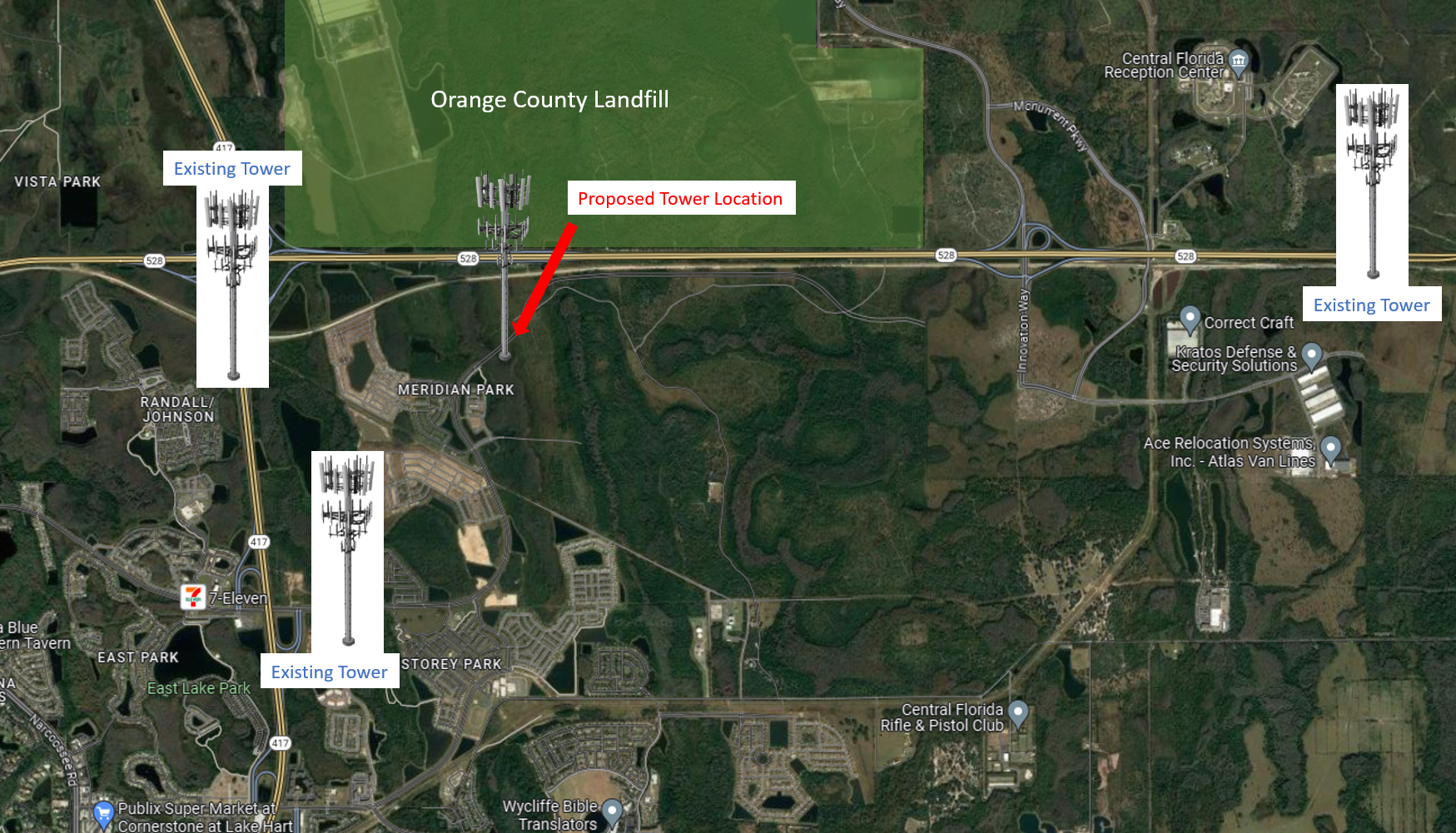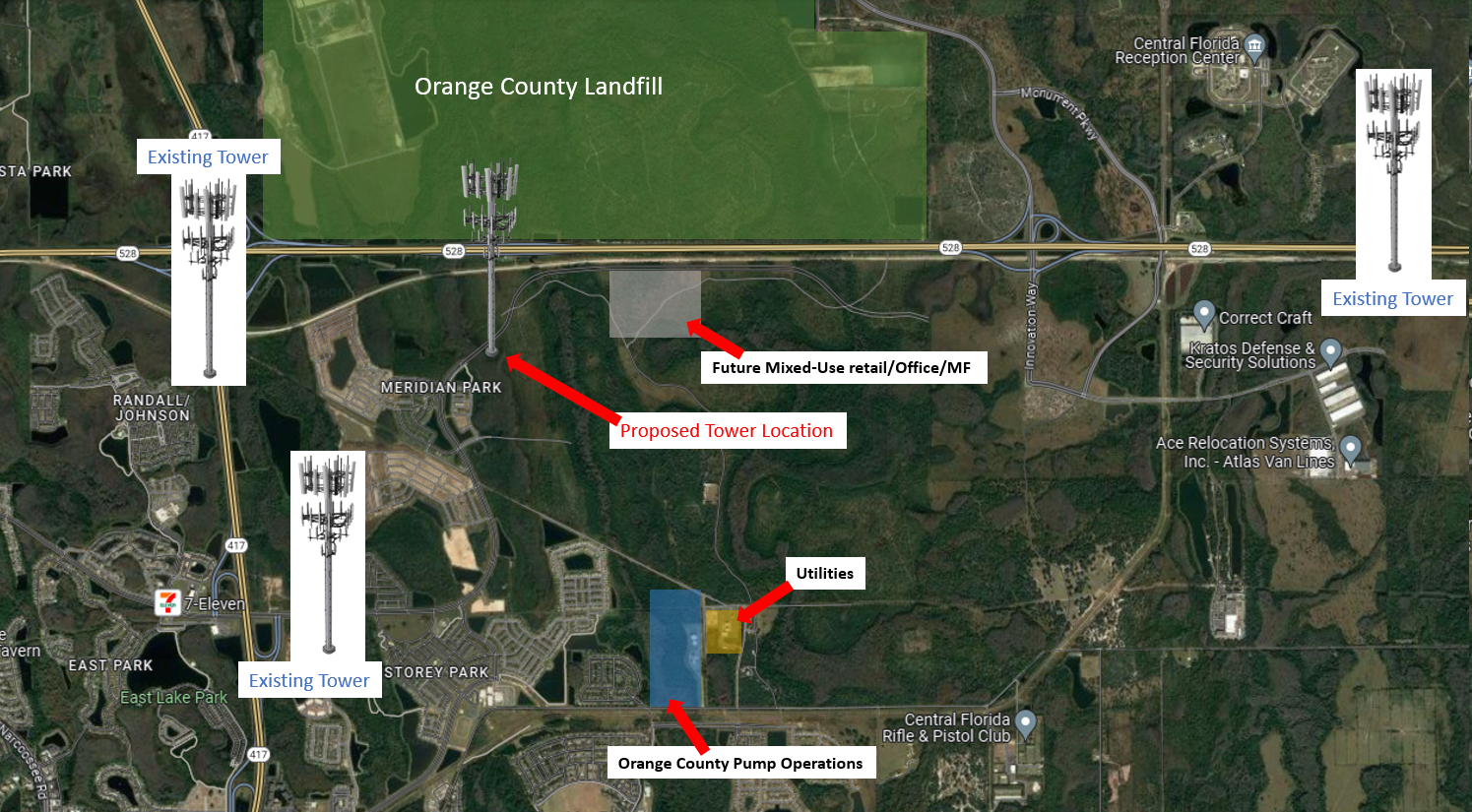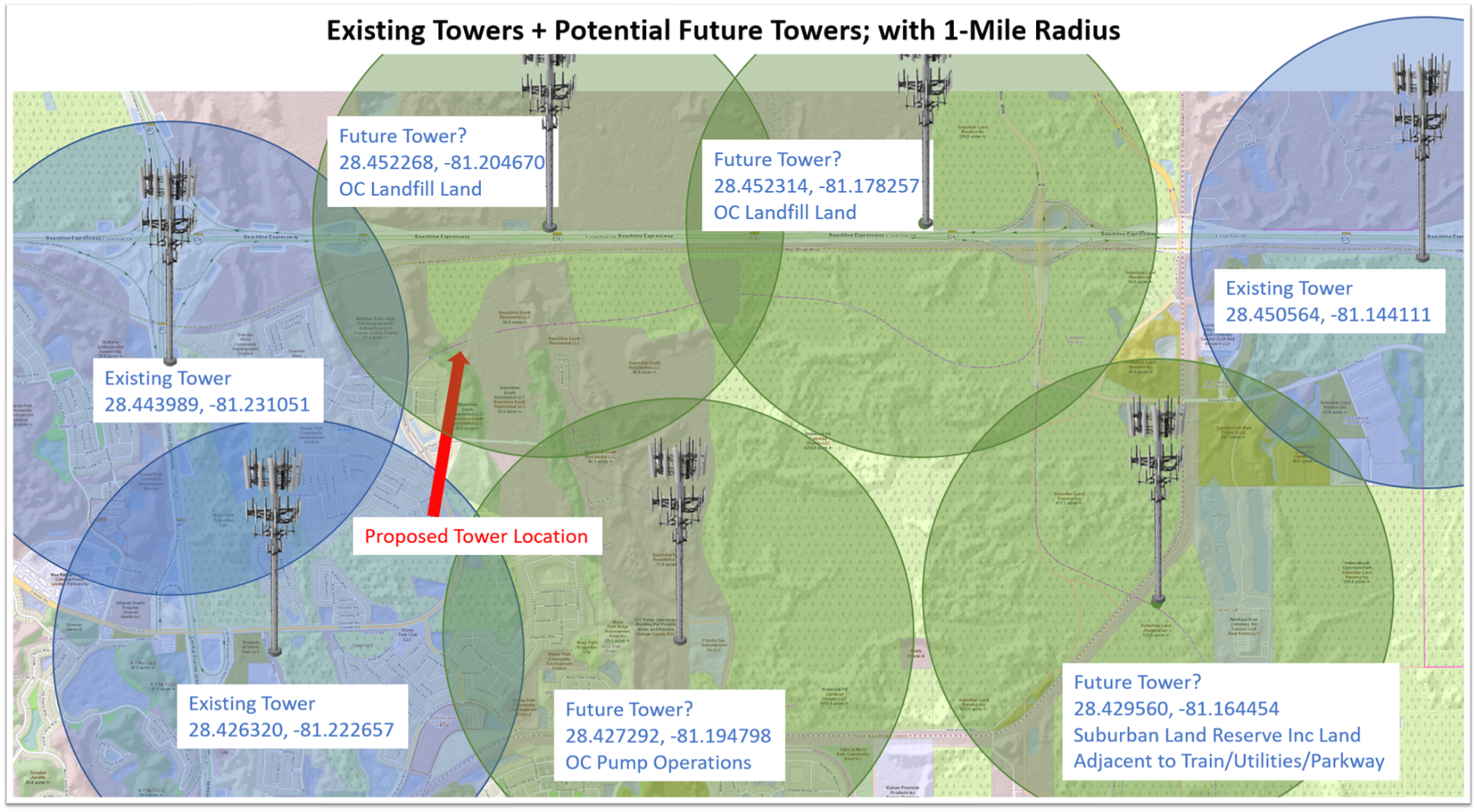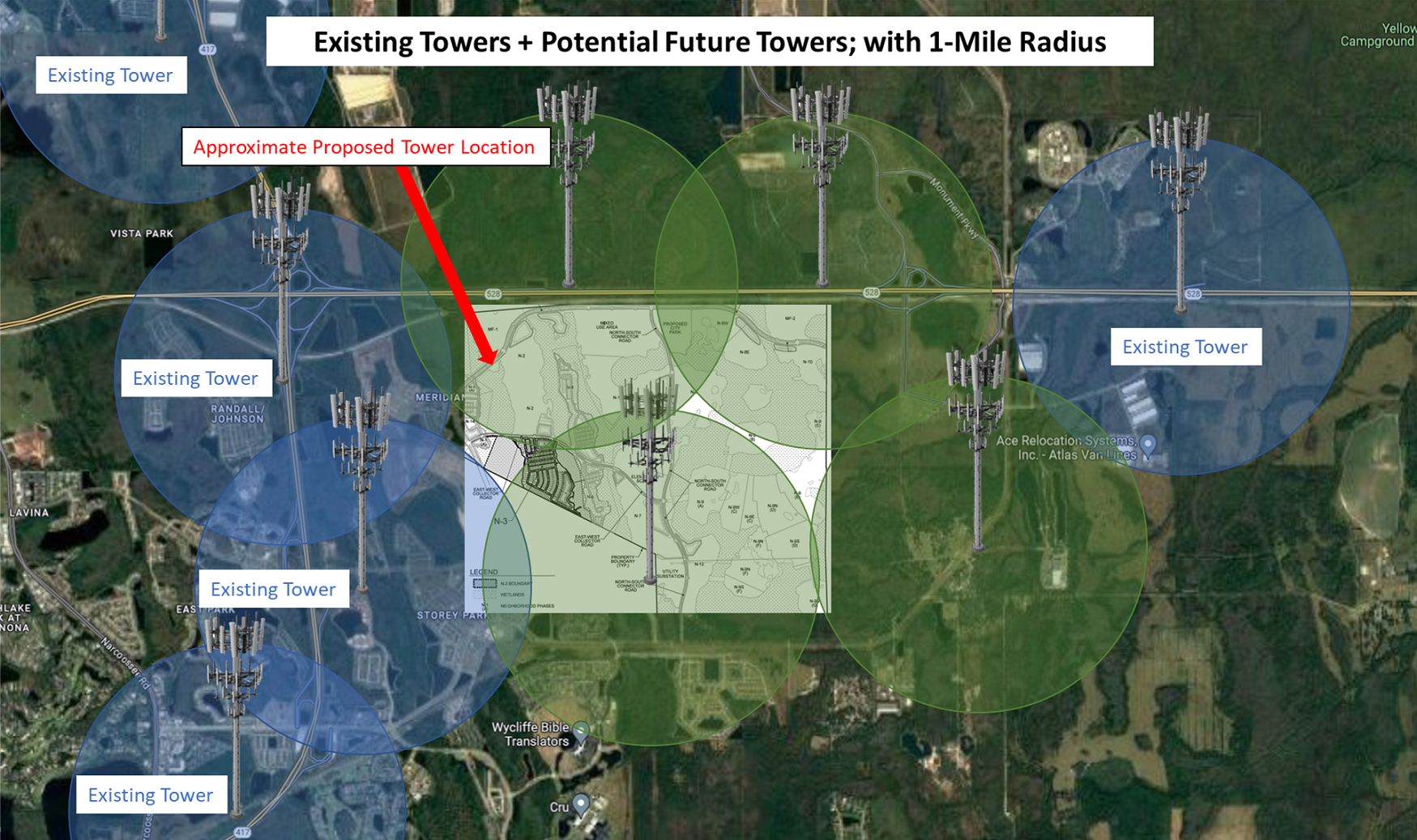Preserve Orlando's Neighborhoods
Support Responsible Citing of Cell Phone Towers
Vast Alternate Site Opportunities Likely Exist
The efforts invested in finding an alternate site are unknown.
A considerable expanse of vacant land lies in the neighboring area offering a less severe impact to current residents. Sites in this land would likely better suit the needs of the wireless network, aligning with the provider’s bandwidth desires. Most likely the cell tower site should be located no less than 2 miles from already existing towers, with the land of the county landfill emerging as a preferred local. This choice minimizes aesthetic and property value impacts, and likely addresses current other concerns and expert recommendations relate to health.

|
Furthermore, beyond the considerations of vacant land in the neighboring area, Land designated for Orange County pump operations, electric utilities, and planned future mixed-use retail areas present additional opportunities for alternative sites. These areas offer existing or planned infrastructure and potential synergies for integrating wireless network facilities. Leveraging these designated zones could provide solutions that not only meet the coverage needs of the wireless network provider but also align with the county's development plans and minimize potential impacts on residents and property values. Exploring these alternate sites within the county's designated zones could offer a comprehensive approach to addressing the needs of both the wireless network provider and the community.

|
Long Term Strategic Site Concept
The efforts invested in determining an efficient long term strategy for cell tower placement in the local community are unknown. Noting that according to page 9 of the applicant's "Engineering Necessity Case," the proposed site currently boasts the highest coverage rating, with the entire Starwood property enjoying at least the minimal required coverage. Furthermore, the coverage data presented on page 9 suggests that a tower could provide optimal coverage within a radius of 1-2 miles, indicating that towers spaced 2-4 miles apart could establish a grid of maximum coverage.
Given the significant impact of cell towers on local communities, it is imperative to conduct a comprehensive strategic evaluation for future placements. The primary goal should be to optimize coverage while minimizing the impact on residents (i.e. the proliferation of towers).
The graphics below illustrate existing and potential cell sites, highlighting opportunities to strategically position minimally intrusive towers for establishing a robust cellular grid. This approach seeks to maximize user coverage (i.e. have almost all of the community within a one-mile radius of each tower), make use of readily available county property, and minimize disruptions to residents.
Maximizing the use of readily available county property reduces the need for applicants to acquire privately owned sites and addresses concerns regarding property availability. Notably, three of the four prospective cell sites are situated on Orange County landfill and water treatment facility property. The fourth site, assumed less desirable land for future development, is located adjacent to existing railway and utility infrastructure on private land. However, there is potential to explore placing the fourth site on the adjacent utility property owned by the City of Orlando Utilities Commission.
It's worth highlighting that two out of the three towers situated on county property have adjacent undeveloped land, which is privately owned and potentially available for utilization. Furthermore, it's important to note that the minimal areas not within a 1-mile radius of a tower largely comprise planned preservation areas, park/open spaces, and roadways.

|

|